FR COVERALLS
All coveralls have been carefully designed to provide you protection and comfort while you are working.
CLASSIC
CLASSIC COVERALL has a simple design.
It has a spread collar; a front zipper with two slides; two chest pockets with flaps and snap closure, two patch pockets in pants, and a back pocket. Elasticized waist. Adjustable cuffs with hook and loop.
All coveralls are triple stitched with FR sewing thread as well as bar tacked to reinforce weaker areas.

American standard which establishes that employees who are exposed to a possible arc flash should wear appropriate flame resistant garment for the risk level of their workplace. Employers must evaluate an arc flash to determinate the risk of potential energy and the limit of protection against the arc flash.
The protective garment should cover the calculated incident energy or risk level, reaching at least its minimum ATPV.
Arc Thermal Performance Value - ATPV
Arc Thermal Performance Value - ATPV
- Level 0: No risk
- Level 1: between 4 to 7.9 cal/cm2
- Level 2: between 8 to 24.9 cal/cm2
- Level 3: between 25 to 39.9 cal/cm2
PREMIUM
PREMIUM COVERALL has a spread collar; a front zipper with two slides protected by a flap with snap button closure; two chest pockets with flaps and snap closure, two patch pockets in pants, and a back pocket.
Elasticized waist. Adjustable cuffs with hook and loop. FR Reflective tapes on shoulders and legs.
All coveralls are triple stitched with FR sewing thread as well as bar tacked to reinforce weaker areas.

American standard which establishes that employees who are exposed to a possible arc flash should wear appropriate flame resistant garment for the risk level of their workplace. Employers must evaluate an arc flash to determinate the risk of potential energy and the limit of protection against the arc flash.
The protective garment should cover the calculated incident energy or risk level, reaching at least its minimum ATPV.
Arc Thermal Performance Value - ATPV
Arc Thermal Performance Value - ATPV
- Level 0: No risk
- Level 1: between 4 to 7.9 cal/cm2
- Level 2: between 8 to 24.9 cal/cm2
- Level 3: between 25 to 39.9 cal/cm2

American standard for garments that protect from flash fire. The standard demands that after being washed a hundred times, the garment is put on a mannequin and exposed to 3 seconds of direct flame. In order to accomplish the standard the result must show less than 50% of body burn.

For Molten aluminium splashes (code D) the garment must classify at least at level D1.
Molten iron splashes (code E) the garment must classify at least at level E1
Level |
Molten Aluminium (g) |
|
Min. |
Max. |
|
D1 |
100 |
< 200 |
D2 |
200 |
< 350 |
D3 |
350 |
|
Level |
Molten iron (g) |
|
Min. |
Max. |
|
E1 |
60 |
< 120 |
E2 |
120 |
< 200 |
E3 |
200 |
|

The standard classifies High-Visibility Safety Apparel (HVSA) as Performance Class 1, 2 or 3, depending on the amount of visible background and retroreflective material. These Performance Classes give users a way to specify HVSA that is appropriate for the work environment and hazards. The 2015 edition also establishes three types of garments:
- Type O (off-road), for non-roadway use, where workers are not exposed to high traffic or temporary control zones. Type O HVSA is Performance Class 1.
- Type R (roadway), for use where workers are exposed to traffic from public access highway rights-of-way or roadway temporary control zones. Type R HVSA may be Performance Class 2 or 3.
- Type P (public safety) for emergency and incident responders and law enforcement personnel who are exposed to struck-by hazards in roadway or off-road work environments. These garments provide additional options addressing competing hazards or the need for access to special equipment. Type P HVSA may be Performance Class 2 or 3
RAPTOR
RAPTOR COVERALL has been designed for extreme Works in confined spaces at high temperatures. It has a stretch woven fabric in the lumbar and shoulder area to allow better movement.
Incredibly low resistance to steam (3.17 m2 PA/W) which guarantees to be the most breathable coverall in the market. The Heat loss of the fabric is 642 Watts m2 which provides great comfort to the wearer.
Fire resistant reflective tapes in shoulders, arms, and legs.
Triple stitches and bar tacks to provide great tear resistance.

American standard which establishes that employees who are exposed to a possible arc flash should wear appropriate flame resistant garment for the risk level of their workplace. Employers must evaluate an arc flash to determinate the risk of potential energy and the limit of protection against the arc flash.
The protective garment should cover the calculated incident energy or risk level, reaching at least its minimum ATPV.
Arc Thermal Performance Value - ATPV
Arc Thermal Performance Value - ATPV
- Level 0: No risk
- Level 1: between 4 to 7.9 cal/cm2
- Level 2: between 8 to 24.9 cal/cm2
- Level 3: between 25 to 39.9 cal/cm2

American standard for garments that protect from flash fire. The standard demands that after being washed a hundred times, the garment is put on a mannequin and exposed to 3 seconds of direct flame. In order to accomplish the standard the result must show less than 50% of body burn.

For Molten aluminium splashes (code D) the garment must classify at least at level D1.
Molten iron splashes (code E) the garment must classify at least at level E1
Level |
Molten Aluminium (g) |
|
Min. |
Max. |
|
D1 |
100 |
< 200 |
D2 |
200 |
< 350 |
D3 |
350 |
|
Level |
Molten iron (g) |
|
Min. |
Max. |
|
E1 |
60 |
< 120 |
E2 |
120 |
< 200 |
E3 |
200 |
|

The standard classifies High-Visibility Safety Apparel (HVSA) as Performance Class 1, 2 or 3, depending on the amount of visible background and retroreflective material. These Performance Classes give users a way to specify HVSA that is appropriate for the work environment and hazards. The 2015 edition also establishes three types of garments:
- Type O (off-road), for non-roadway use, where workers are not exposed to high traffic or temporary control zones. Type O HVSA is Performance Class 1.
- Type R (roadway), for use where workers are exposed to traffic from public access highway rights-of-way or roadway temporary control zones. Type R HVSA may be Performance Class 2 or 3.
- Type P (public safety) for emergency and incident responders and law enforcement personnel who are exposed to struck-by hazards in roadway or off-road work environments. These garments provide additional options addressing competing hazards or the need for access to special equipment. Type P HVSA may be Performance Class 2 or 3
MULTITASK
MULTITASK COVERALL has been specially designed for vehicular rescue operations although it can also be used for many other tasks.
Extremetely ergonomic and Hi-Vis, perfect for jobs in highways and roads. It is Fire resistant, antistatic, and anti sparks which is very important when there´s a fuel leakage.
It has a breathable bellow in the lumbar area as well as around the shoulder in order to provide maximum mobility. It has knees and elbows ‘reinforcements especially designed. Fire resistant reflective tapes in shoulders, arms, chest, and legs. Triple stitches and bar tacks to provide great tear resistance.
Extremetely ergonomic and Hi-Vis, perfect for jobs in highways and roads. It is Fire resistant, antistatic, and anti sparks which is very important when there´s a fuel leakage.
It has a breathable bellow in the lumbar area as well as around the shoulder in order to provide maximum mobility. It has knees and elbows ‘reinforcements especially designed. Fire resistant reflective tapes in shoulders, arms, chest, and legs. Triple stitches and bar tacks to provide great tear resistance.

American standard which establishes that employees who are exposed to a possible arc flash should wear appropriate flame resistant garment for the risk level of their workplace. Employers must evaluate an arc flash to determinate the risk of potential energy and the limit of protection against the arc flash.
The protective garment should cover the calculated incident energy or risk level, reaching at least its minimum ATPV.
Arc Thermal Performance Value - ATPV
Arc Thermal Performance Value - ATPV
- Level 0: No risk
- Level 1: between 4 to 7.9 cal/cm2
- Level 2: between 8 to 24.9 cal/cm2
- Level 3: between 25 to 39.9 cal/cm2

American standard for garments that protect from flash fire. The standard demands that after being washed a hundred times, the garment is put on a mannequin and exposed to 3 seconds of direct flame. In order to accomplish the standard the result must show less than 50% of body burn.

For Molten aluminium splashes (code D) the garment must classify at least at level D1.
Molten iron splashes (code E) the garment must classify at least at level E1
Level |
Molten Aluminium (g) |
|
Min. |
Max. |
|
D1 |
100 |
< 200 |
D2 |
200 |
< 350 |
D3 |
350 |
|
Level |
Molten iron (g) |
|
Min. |
Max. |
|
E1 |
60 |
< 120 |
E2 |
120 |
< 200 |
E3 |
200 |
|

The standard classifies High-Visibility Safety Apparel (HVSA) as Performance Class 1, 2 or 3, depending on the amount of visible background and retroreflective material. These Performance Classes give users a way to specify HVSA that is appropriate for the work environment and hazards. The 2015 edition also establishes three types of garments:
- Type O (off-road), for non-roadway use, where workers are not exposed to high traffic or temporary control zones. Type O HVSA is Performance Class 1.
- Type R (roadway), for use where workers are exposed to traffic from public access highway rights-of-way or roadway temporary control zones. Type R HVSA may be Performance Class 2 or 3.
- Type P (public safety) for emergency and incident responders and law enforcement personnel who are exposed to struck-by hazards in roadway or off-road work environments. These garments provide additional options addressing competing hazards or the need for access to special equipment. Type P HVSA may be Performance Class 2 or 3


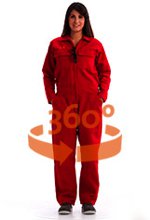
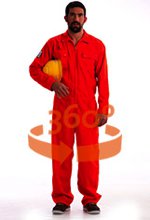
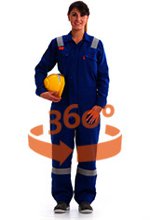
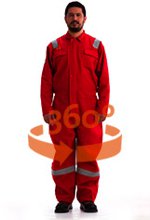
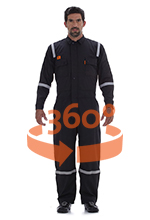
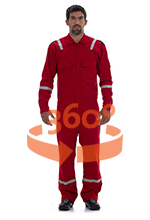
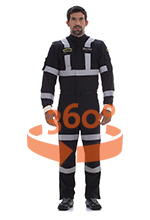
 ©Copyright 2015 Geotex SRL
©Copyright 2015 Geotex SRL